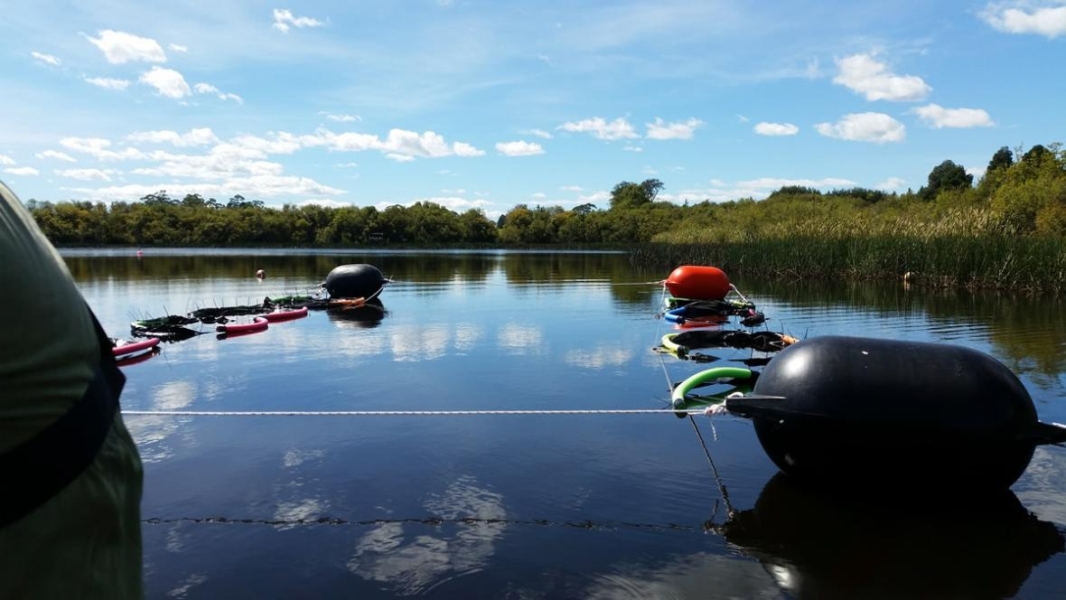The issue
Eutrophication is a widespread problem in freshwater bodies in New Zealand.
Eutrophication occurs when nutrients in streams, rivers, lakes and estuaries cause excessive growth of aquatic plants and algae (primary producers). This excessive growth can impact the ecological health, recreational and food-gathering value of the affected water bodies.
Run-off from productive land use is a leading cause of nutrient input to water bodies, and subsequent eutrophication.
Relating nutrient input to eutrophication is a critical step for establishing nutrient load limits for nutrient-sensitive environments. While there is some information available, more is needed to characterise these relationships and increase their predictability. Knowledge gaps include the relative roles of sediment versus water-column nutrients, and dissolved oxygen responses and their relationship to aquatic plant proliferations.
Objectives
Improve knowledge of relationships between nutrient loads and eutrophication.
Develop predictive spatial models to identify eutrophication risks in catchments.
Integrate risk information across different primary producer types.
Determine the levels of nutrient reduction required to reduce eutrophication risks.
The approach
The project involved field and laboratory experiments and observations across a range of different freshwater environments, as well as the application of models.
Laboratory tests
- The growth of estuarine seaweed Agarophyton sp. was measured in response to varying nitrate and ammonia concentrations.
- The growth of three types of freshwater plants (macrophytes) with different nitrogen concentrations was measured in recirculating channels with controlled nutrient concentrations.
- The growth and metabolism of periphyton (filamentous green algae and Microcoleus (formerly Phormidium)) was measured in small chambers and stream-side channels with controlled nutrient concentrations.
- The growth of benthic Microcoleus was measured on rocks in flowing channels with different amounts of sediment.
In the field
- The growth of Microcoleus was measured on rocks in flowing channels with different amounts of sediment.
- Dissolved oxygen levels and stream metabolism were measured continuously over several seasons.
- The response of the Avon-Heathcote estuary to reductions in nutrients from sewage were documented.
- The response of the Tukituki River to reductions in sewage-derived nutrient inputs were monitored, along with measurements of periphyton metabolism.
- Nutrient limitations on phytoplankton growth was measured down the Waikato River, including Lake Taupo and in shallow lakes lowland lakes near the river, extending from pristine conditions in the upper river to the more degraded lower river.
Modelling and decisions support tools
- Seaweed growth in Avon-Heathcote and New River estuaries was modelled using newly developed models linked to the Deltares 'D-Water Quality' model.
- A new web-based mapping tool, the Eutrophication Explorer, was developed to examine eutrophication risks across a catchment, with specific application to the Oreti catchment in Southland.
- A new spatial model of periphyton growth was applied to the Tukituki River to show how river periphyton respond to longitudinal variation in nutrients.
- A new point-scale model of periphyton growth that accounts for nutrient storage in algal tissue was developed and is currently being tested.
Results
Some key findings and results of the project to date are summarised below.
- The growth of Agarophyton in the New River Estuary is not limited by the availability of nitrogen at concentrations currently encountered in the estuary, although other factors could control the growth.
- Increased nitrate and sedimentation rates and associated rates of biologically available phosphorus are likely promotors of Microcoleus mat expansion in New Zealand.
- Three macrophyte species tested can establish quickly under all nitrogen levels (from 0.04 to 0.4 mg/L) but grow more abundantly with higher water nitrate concentrations.
- Macrophyte-dominated small streams in pasture areas in the Waikato (predominantly in the Piako catchment) develop low oxygen levels in the water column during summer low-flow conditions.
- The shallow Waikato lakes are predominantly phosphorus (P) limited.
- Nutrient limitation in the Waikato River is not strong, but P is increasingly in greater demand than nitrogen (N), progressing from upstream to downstream, and in the estuary.
- In Lake Taupo, phytoplankton growth is P limited in summer. Phytoplankton are not nutrient limited in winter.
- The prototype tool Eutrophication Explorer is available for the Oreti catchment and its estuary and continues to be developed and refined in collaboration with regional councils. This tool will provide valuable new insights into nutrient risks and their spatial relationships in a catchment.
- ETI tools have been applied in many locations nationally.
Twenty-six journal papers were produced with funding from the programme. Commercial projects and models associated with this programme have been used to advise government on limit setting and policy analysis at national scale.
Several of the study components are currently being completed or documented, and results will be made available shortly. More detailed information about eutrophication and this project, including related publications, can be found on the Eutrophication Risk Assessment wiki site.

